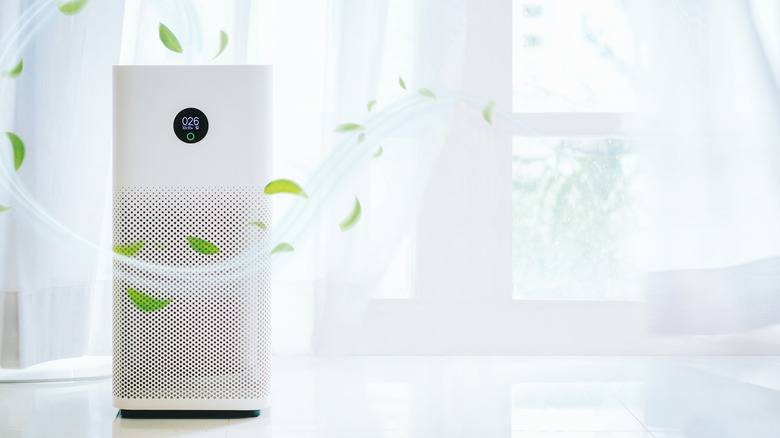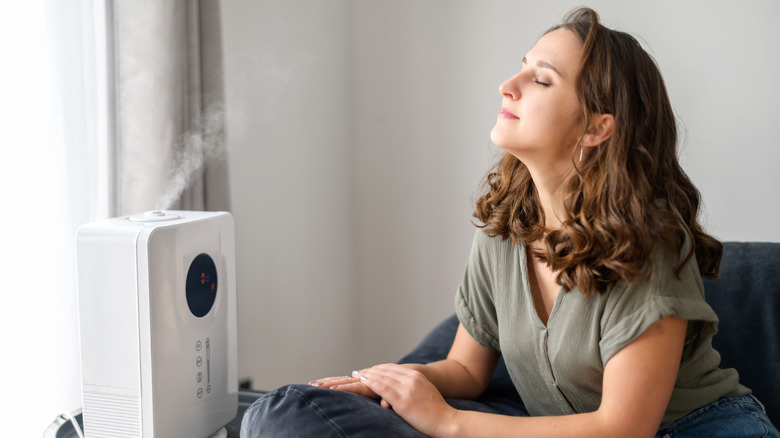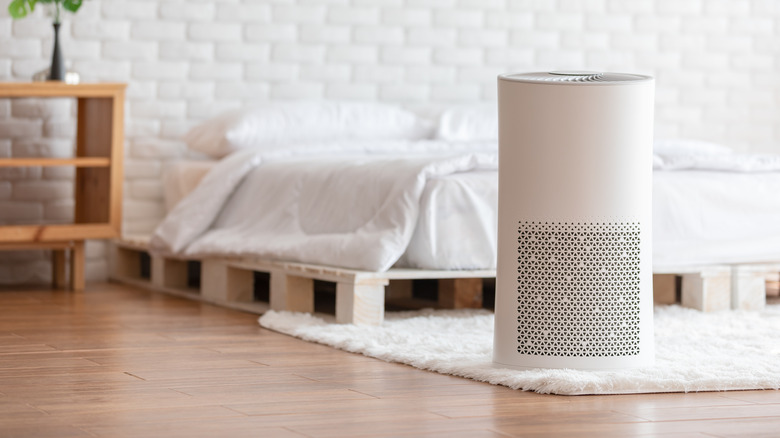How To Properly Use A Humidifier
Dry skin, chapped lips, and watery eyes: you're likely familiar with the typical problems dry air brings. Worse yet, dry air irritates your sinuses and can make you more susceptible to various respiratory conditions (via Healthline). Central heating is another issue — despite the comfort it offers during the colder months, it further dries out the air in the home and office. This can cause more strain and discomfort in your nasal passages and mucous membranes (via Healthline).
With all of these hazards, many people resort to additional care measures, especially during winter. This includes moisturizing the skin daily to keep it hydrated and prevent chapping. It also makes sense to use humidifiers, as they add more moisture to the air and can be beneficial for those with breathing problems, per MedicalNewsToday. However, the type of humidifier, along with how you use and maintain it, are equally important factors to consider.
Keep an eye on the humidity level
Before using a humidifier, the first step is to measure the humidity level in your living space. If it's too high, it may be detrimental to your health, as your home will be more susceptible to mold, per WebMD. According to the Mayo Clinic, the ideal humidity is between 30% and 50%. It notes that going lower can irritate your nasal passage and cause dry skin. On the other hand, high humidity can make your home stuffy and create condensation.
The Asthma and Allergy Foundation of America believes that humidity levels beyond 70% can also trigger the growth of dust mites. Dust mites can further curtail normal breathing and set off asthma attacks. Your best bet is to ensure your humidifier has a built-in hygrometer that reads the room and determines the right humidity level for your home, per the Mayo Clinic.
Also, note that not all humidifiers release moisture in the same way. Vaporizers were the earliest humidifier types for indoors, but using them around children can be unsafe. The American Academy of Pediatrics recommends using cool-mist humidifiers for babies to avoid burns (per WebMD).
Taking humidifier precautions
Using a dirty humidifier is problematic. Your humidifier can become a breeding ground for bacteria and mold without regular maintenance, per the Mayo Clinic. Many humidifier manufacturers recommend that customers regularly replace air filters and other humidifier parts.
Cleaning your humidifier after every use is crucial — replacing stale water in the tank every night will prevent circulating mold or fungi. If you notice white buildup (known as scale) in your humidifier, it might be time for a thorough cleaning. According to Healthline, this scale can adversely affect your lungs when released back into the air.
Although cool mist humidifiers offer energy efficiency perks, the mechanism that cools mist humidifiers can sometimes be problematic. According to Children's Hospital Colorado, cool mist humidifiers use high-frequency vibration to pulverize water into a fine mist and circulate it throughout the home. However, they also aerosolize bacteria, chemicals, and minerals, making it easier to breathe these harmful substances into your lungs.
Considering the downside of the cool mist humidifier, it's tempting to settle on a warm mist humidifier as the best option. However, the steam from these types can burn children — especially toddlers — who may accidentally come too close to the device. Therefore, it's crucial to be alert when using a humidifier in a home with young children.



